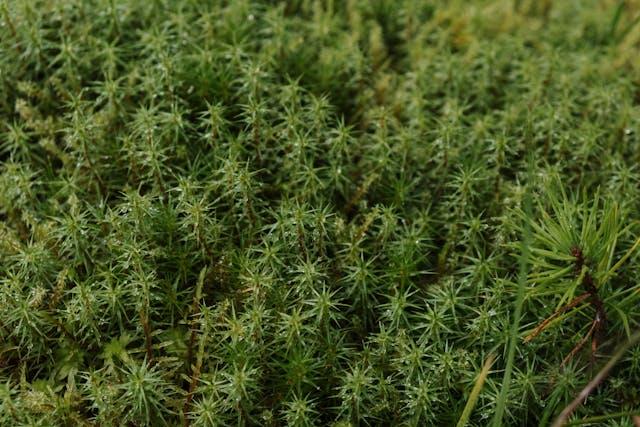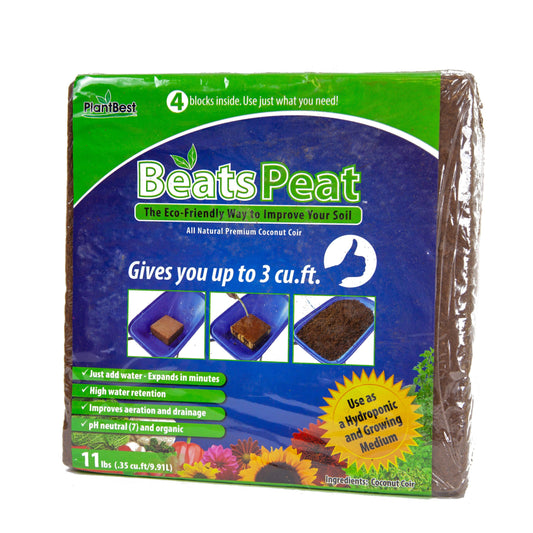Introduction
Using the right soil amendment can completely transform your garden soil—improving its texture, moisture retention, and fertility. Among the most trusted amendments by gardeners in the United States is sphagnum peat moss, a material that has supported healthy gardens for generations.
Whether you’re creating a garden bed, improving clay soils, or mixing your own potting mix, learning how much peat moss to add to soil is key to achieving strong, thriving plants.

What Is Sphagnum Peat Moss?
Sphagnum peat moss is a natural material formed over thousands of years from living sphagnum moss and other organic materials that slowly decompose in peat bogs—wet, spongy areas found mostly in the northern hemisphere. Over time, this decaying plant matter becomes a soft, fibrous, and highly absorbent substance known as peat sphagnum.
When added to garden soil, it helps loosen compacted earth, enhances water retention, and encourages better air flow for plant roots. Peat moss holds water like a sponge, helping the soil stay evenly moist without becoming soggy.
If you’d like to learn more about improving your soil naturally, visit our Resource Center for expert articles, videos, and free guides.
Why Gardeners Love Peat Moss
Gardeners use sphagnum moss and peat moss for many reasons:
1. Excellent Moisture Retention
Peat moss retains water better than most amendments. It slowly releases moisture back into the soil, preventing dry spells—especially helpful for sandy soils that dry out quickly.
2. Better Soil Aeration
In heavy clay soils, mixing peat moss lightens the texture and improves drainage, making it easier for plant roots to grow deep and strong. You can read more about improving soil structure in our guide to achieving good soil drainage.
3. Ideal for Seed Starting and Potting Mixes
When planting with peat moss, it provides an airy environment ideal for seed starting and young seedlings. Its fine texture helps seeds stay moist while still getting enough oxygen.
4. Great for Acid-Loving Plants
Because peat moss is naturally acidic, it’s perfect for acid loving plants like blueberries, rhododendrons, and azaleas. It gently lowers soil pH, creating conditions these plants thrive in.
You can find high-quality Black Gold Peat Moss (3.8 Cu Ft) to improve your garden soil or garden beds of any size.
How Much Peat Moss to Add to Soil
Knowing how much peat moss to add to soil depends on what you’re planting and your soil type.
- For garden beds: Mix one part peat moss with two parts soil. Blend it into the top layer (6–12 inches deep) to ensure even distribution.
- For containers and potting mixes: Combine one-third peat moss, one-third compost or perlite, and one-third soil for optimal drainage and aeration.
- For seed starting: Use a 50/50 mix of peat moss and vermiculite or perlite for a lightweight, moisture-friendly mix.
Avoid using pure peat moss alone—it doesn’t contain enough nutrients for plants and can compact over time. Always mix peat moss with other materials for balance.
Environmental Considerations and Alternatives
Although peat moss is a natural soil amendment, its extraction from peat bogs can release carbon dioxide and impact fragile ecosystems. Because peat moss regenerates slowly, many gardeners are exploring sustainable options.
Eco-Friendly Peat Moss Alternatives
If you’re looking for an alternative to peat, try these eco-friendly options:
- Coconut Coir: A renewable byproduct from coconut husks, coco coir improves moisture and improve soil structure while offering excellent water retention. Learn more about it in our guide on the benefits of using coco coir in the garden.
- Rice Hulls: A lightweight alternative to peat moss that enhances aeration and drainage in potting mixes.
- Composted materials: Organic compost, bark, or leaf mold all help improve soil health naturally.
You can explore our full range of soil amendments to find the best option for your garden’s needs.

Using Peat Moss in the Garden
Here are a few practical tips for planting with peat moss successfully:
- Always moisten peat moss before use—it’s easier to mix and absorbs water evenly.
- Use peat moss in raised garden beds to improve drainage and soil texture.
- Blend it with compost to add nutrients and organic matter.
- For potted plants, mix it with perlite or sand to prevent sogginess.
- Avoid using peat moss as mulch; it can dry out and repel water if left on the surface.
If you want to learn about additional gardening techniques, browse our garden books for in-depth soil care and planting tips.
Conclusion
Sphagnum peat moss is one of the most effective ways to enrich garden soil, improve water retention, and support healthy plant roots. When used thoughtfully and in the right amounts, it creates the perfect environment for strong growth and lasting soil health.
To balance productivity with sustainability, consider combining peat moss with renewable alternatives to peat like coconut coir or rice hulls. With careful use and the right blend of organic materials, your garden will stay healthy, resilient, and vibrant season after season.






5 comments
I thought putting a black weed barrier would my plants thrive. Man, was I wrong! It completely dries everything out, leaving you with a sandy soil. It takes a ton of watering, peat moss and soil to bring back the health of your garden. Bottomline: I’d rather pull the weeds than go through that again.
Don’t clear your leaves! The trees have roots that are very deep which send nutrients up to the top of the tree.. The leaves contain those nutrients And are fabulous and free for your garden. I go around and collect the leaves from neighbors.
CG, you can leave the moss, it will not hurt your berries, but sounds like you may have some critters feeding on your blueberry roots. You can fill the holes, but most likely, they will just come back. You can mulch with sphagnum peat moss, blueberries like acidic soil, so that will help.
Peat moss does NOT improve drainage!! It COMPLETELY stops drainage! I tested the drainage of orchid mix that came with peat moss and literally no water comes out the bottom of the pot. Peat moss literally prevents any water from draining! It’s a nightmare to get in your soil!!
I need help with my blueberries. The bases of the plants are covered with moss and moss is also growing under the ground cloth which is between the plants to control weeds! Also, when clearing the leaves from the area and getting ready to fertilize, I found a hole in the ground under several plants. Should I remove the ground cover and should I fill the holes? Is sphagnum peat moss the best mulch; I don’t have access to fir sawdust. The plants are on a hill and I am trying to keep any fertilizer and mulch from washing away. I am trying to keep organic.